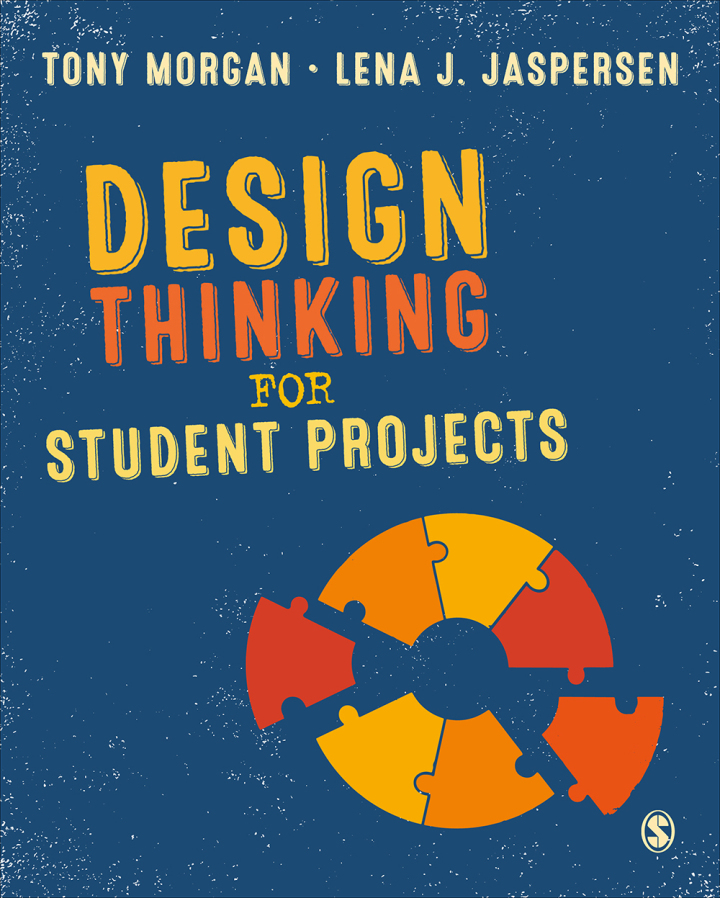
Design Thinking for Student Projects 1st Edition
PUBLISHER: Sage
Trường ĐH, Nhóm, Thư Viện: Gọi 0915920514 để báo giá eBook hosting trên Vital Source hoặc mua Sách In
Tư duy thiết kế cho dự án sinh viênNhà tuyển dụng tìm kiếm nhiều hơn chỉ là một tấm bằng tốt. Các ứng viên được kỳ vọng có khả năng giải quyết vấn đề một cách sáng tạo, quản lý sự thay đổi, thể hiện nhận thức về thương mại cũng như cộng tác và giao tiếp ở các cấp độ khác nhau. Càng ngày, các trường đại học càng giúp sinh viên của họ đạt được những kỹ năng này thông qua các dự án theo nhóm, sử dụng sự đổi mới để giải quyết các vấn đề trong thế giới thực. Được biên soạn dựa trên ý kiến đóng góp trực tiếp của sinh viên cùng với lời khuyên và hướng dẫn từ các chuyên gia hàng đầu trong ngành, cuốn sách giáo khoa này sẽ hướng dẫn người đọc các bước cần thiết để thực hiện một dự án theo nhóm, tạo điều kiện phát triển các kỹ năng việc làm quan trọng trong quá trình thực hiện. Người đọc cũng có thể kết nối với nhau và tạo các dự án cũng như nhóm của riêng mình thông qua nhóm LinkedIn của cuốn sách. Thích hợp cho sinh viên đại học và sau đại học ở tất cả các ngành thực hiện các mô-đun và khóa học theo nhóm cũng như những người học độc lập, Tư duy thiết kế cho dự án sinh viên là hướng dẫn cần thiết để học các kỹ năng Tư duy thiết kế thực tế và khả năng làm việc. Tony Morgan là Phó Giáo sư về Thực hành Quản lý Đổi mới tại Đại học Leeds. Lena J. Jaspersen là Nghiên cứu viên Đại học về Quản lý Đổi mới tại Đại học Leeds.
- About the AuthorsAbout the IllustratorsAcknowledgementsOnline ResourcesList of IconsPreface
- Chapter 1: IntroductionWelcomeWhat this book is aboutHow to work with this bookHow will I learn?The seven skill areasLearning featuresOnline resources for studentsOnline resources for instructorsStructure of the bookResources neededConclusion
- Chapter 2: InnovationIntroductionInnovationWhat is innovation?Why is innovation important?Which organisations are the most innovative?Are there different types and levels of innovation?Innovation managementWhat is innovation management?What does innovation management involve?Open innovationWhat is open innovation?How does open innovation work?How does open innovation impact the innovation management process?Innovation enablersConclusion
- Chapter 3: Design ThinkingIntroductionUnderstanding Design ThinkingWhat is Design Thinking?The Design Thinking processLove the problem!TeamworkDesign Thinking practiceTeamingDesign Thinking onlineConclusion
- Chapter 4: Loving the ProblemIntroductionCreating an effective teamInnovation challengesStarting outResearching your challengeProject Research CanvasProblem Statement – Why? Who? What? When? Where? and How?Stakeholder mappingInterviewsConclusion
- Chapter 5: Idea GenerationIntroductionGenerating ideasDifferent approaches to generating ideasWhere do the best ideas come from?Applying Design Thinking techniques to the challengePreparing for the Design Thinking workshopsFacilitating Design Thinking workshopsWorkshop 1 – Empathy and understandingEnd user categoriesEnd user personaEmpathy mapIdentifying pain points and opportunitiesWorkshop 2 – Idea generationIdea generationIdea prioritisationConclusion
- Chapter 6: Communication SkillsIntroductionWhy do we communicate?How do we communicate?Who do we communicate with during an innovation project?Active listening and empathyActive listeningThe importance of empathyStorytellingWhat’s in a good story?Communicating and collaborating in teamsHolding effective meetingsPlanning team activitiesWhen things go wrong…Conclusion
- Chapter 7: Idea Validation and DevelopmentIntroductionValidating ideasThe Six Thinking Hats techniqueDesign Thinking Hills: ‘Who, what and wow!’Design Thinking storyboardsPrototypingHow much is enough?Paper prototypingConclusion
- Chapter 8: Commercial Awareness and ValueIntroductionWhat commercial awareness is and how to get it…Organisation levelMacro levelProject levelFunding sources for innovation projectsStructuring a business caseElements of a business caseUnderstanding business casesDeveloping a value proposition statementConclusion
- Chapter 9: Managing Change and Overcoming SetbacksIntroductionIteration is part of the planEmbracing failureAnalysing and reflecting on failureTurning a problem into an opportunityDeveloping ‘bouncebackability’Conclusion
- Chapter 10: Pitching Innovation and Wow FactorIntroductionCombining and building upon what you’ve already learnedPresenting and pitchingKnowing your audienceKnowing yourself and your teamPresentation is a skill which can be learnedIt’s natural to be nervousWow factorDeveloping the innovation pitchImportance of being uniqueContent and mediaStructure of an innovation pitchPractice makes better (much, much better)Personal considerationsPracticeIf/when things go wrongFinal preparationsDelivering the innovation pitchReflecting on the innovation pitchConclusion
- Chapter 11: Applying the LearningIntroductionThe four-step learning model and seven skill areasReflective learningFeedbackApplying the learningDesign Thinking your life?Don’t stop now!ConclusionBibliographyIndex















